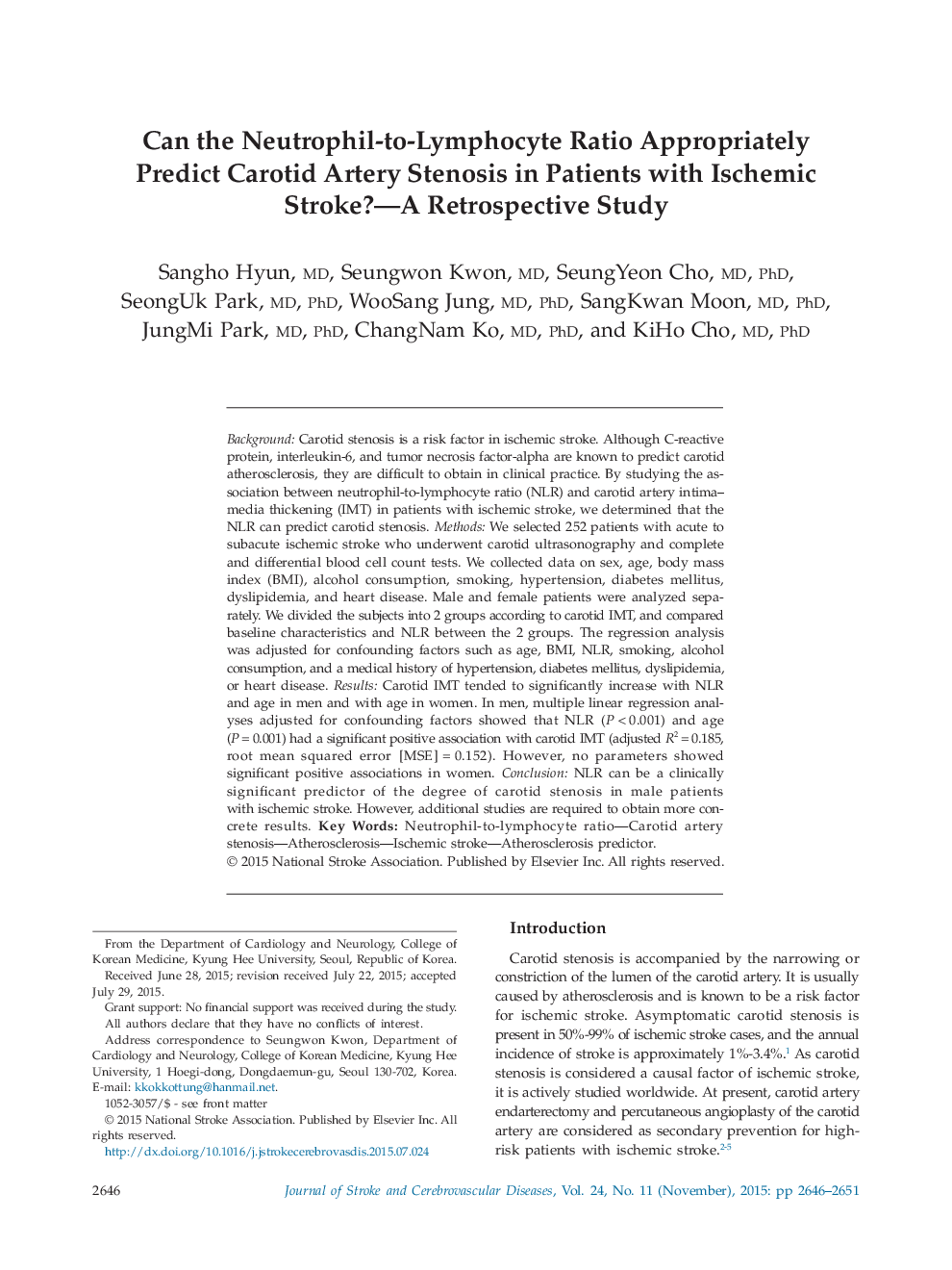| Article ID | Journal | Published Year | Pages | File Type |
|---|---|---|---|---|
| 2702439 | Journal of Stroke and Cerebrovascular Diseases | 2015 | 6 Pages |
Background: Carotid stenosis is a risk factor in ischemic stroke. Although C-reactive protein, interleukin-6, and tumor necrosis factor-alpha are known to predict carotid atherosclerosis, they are difficult to obtain in clinical practice. By studying the association between neutrophil-to-lymphocyte ratio (NLR) and carotid artery intima–media thickening (IMT) in patients with ischemic stroke, we determined that the NLR can predict carotid stenosis. Methods: We selected 252 patients with acute to subacute ischemic stroke who underwent carotid ultrasonography and complete and differential blood cell count tests. We collected data on sex, age, body mass index (BMI), alcohol consumption, smoking, hypertension, diabetes mellitus, dyslipidemia, and heart disease. Male and female patients were analyzed separately. We divided the subjects into 2 groups according to carotid IMT, and compared baseline characteristics and NLR between the 2 groups. The regression analysis was adjusted for confounding factors such as age, BMI, NLR, smoking, alcohol consumption, and a medical history of hypertension, diabetes mellitus, dyslipidemia, or heart disease. Results: Carotid IMT tended to significantly increase with NLR and age in men and with age in women. In men, multiple linear regression analyses adjusted for confounding factors showed that NLR (P < 0.001) and age (P = 0.001) had a significant positive association with carotid IMT (adjusted R2 = 0.185, root mean squared error [MSE] = 0.152). However, no parameters showed significant positive associations in women. Conclusion: NLR can be a clinically significant predictor of the degree of carotid stenosis in male patients with ischemic stroke. However, additional studies are required to obtain more concrete results.
